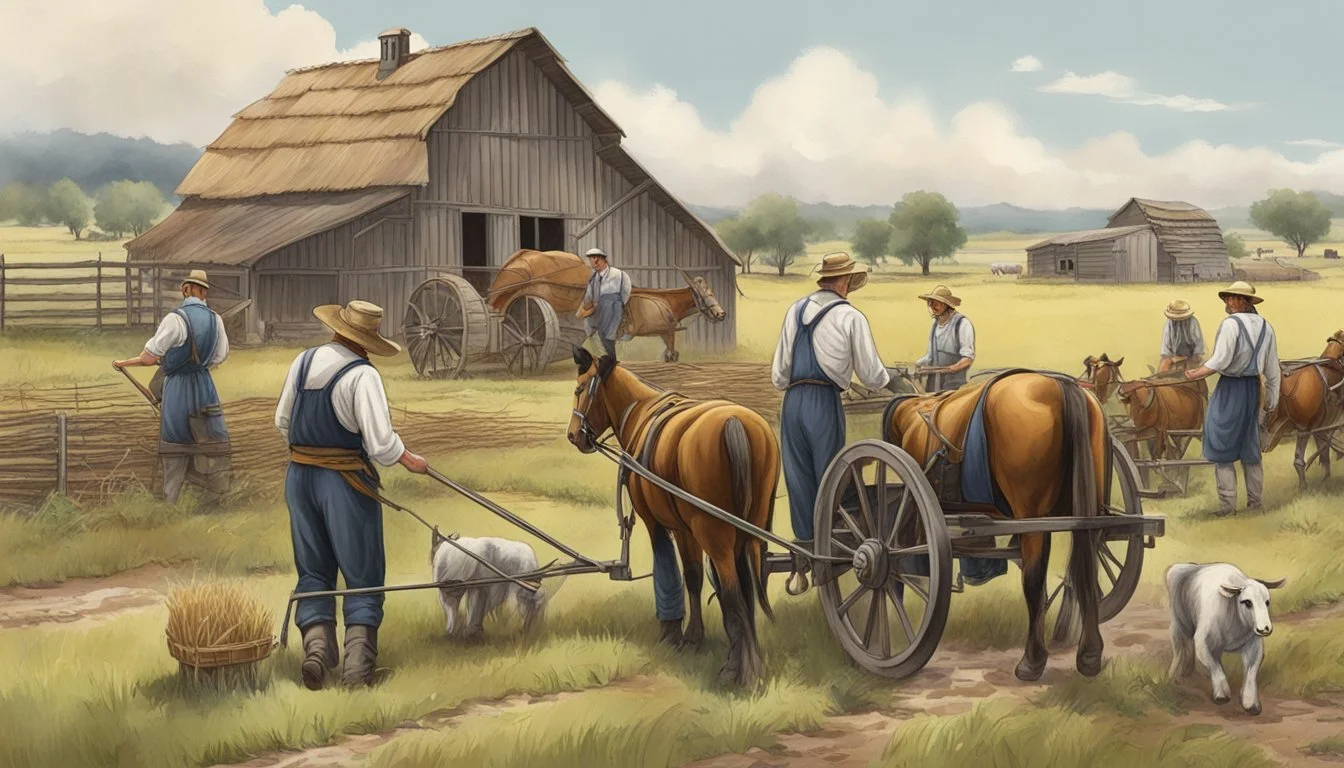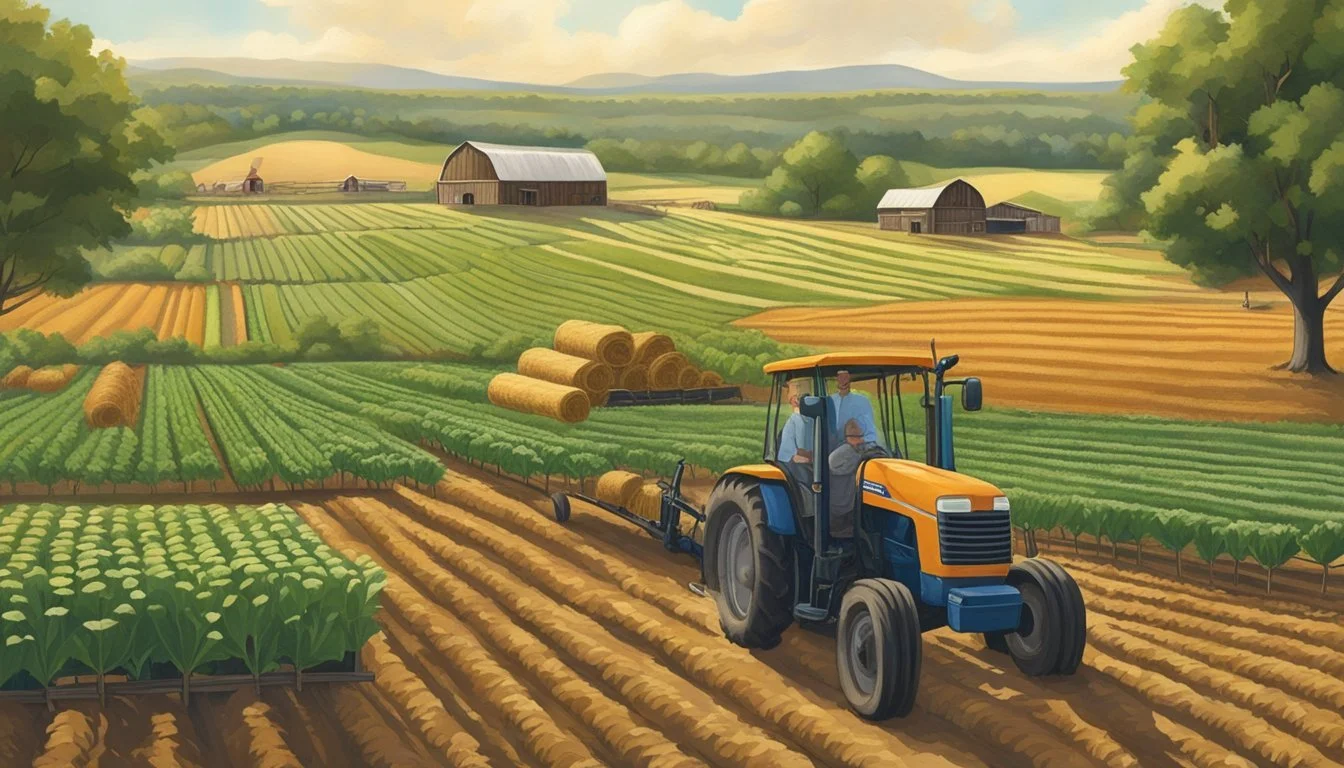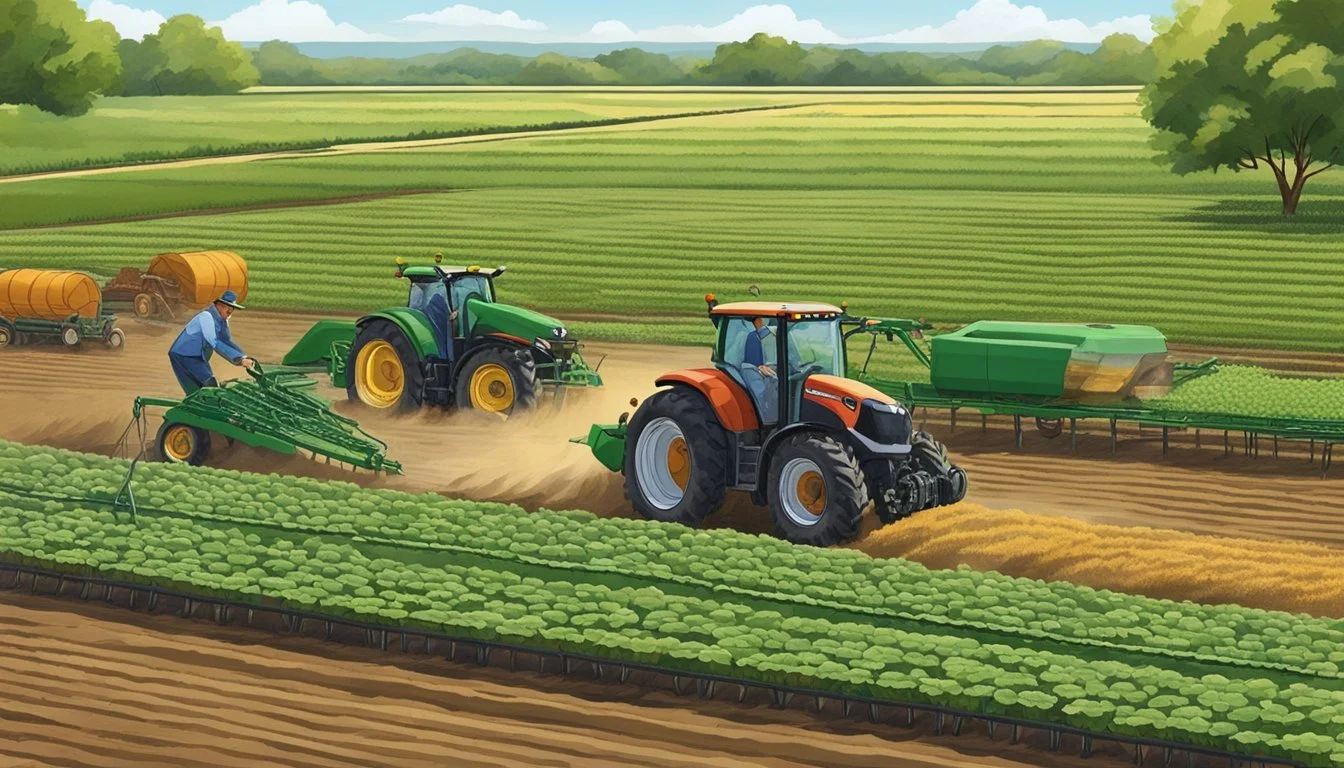German Texan Contributions to Texas Agriculture
A Historical Perspective
German Texans have played a significant role in the development of Texas agriculture since their migration in the early 19th century. These migrants from Germany brought with them an array of farming techniques, solid work ethics, and a dedication to the land that was both pioneering and sustainable. They applied their knowledge to the diverse Texas landscape, creating a fusion of German agricultural practices with the unique environmental conditions of the state.
The impact of German Texans on agriculture was evident in several areas, including the introduction of new crops that have since become staples in the local diet. Their settlements, such as those in Fredericksburg and New Braunfels, became hubs of agricultural innovation and productivity. These communities were characterized by a strong sense of cohesion and expertise in cultivating the land, which helped establish a resilient agricultural sector in Texas.
Moreover, German Texans were instrumental in founding significant industries beyond just cultivation. Brewing, for instance, benefiting from traditional German techniques, flourished in Texas due to their influence. Their legacy in the state is a testament to the enduring contributions made by German migrants to the agricultural and cultural fabric of Texas.
Historical Foundation: German Settlers in Texas
In the mid-19th century, a significant influx of German settlers began to shape the cultural and agricultural landscape of Central Texas. Towns like Fredericksburg and New Braunfels stand today as testaments to their legacy. Founded by these immigrants, these communities became hubs of German culture in Texas, retaining many of the traditional values and practices of their homeland.
The formation of these German Texan colonies was often orchestrated by the Adelsverein, also known as the Society for the Protection of German Immigrants in Texas. A prominent figure in this settlement initiative was Prince Carl of Solms-Braunfels, who played a crucial role in establishing New Braunfels. John O. Meusebach, another key leader, succeeded Prince Carl and established Fredericksburg, further contributing to the German footprint in Texas. Their collective efforts created a society where German Texans could thrive while contributing to the state's development.
In Austin County, near a small town named Industry, German Texan contributions to agriculture began with Frederick Ernst, one of the first settlers in the region. The German influence quickly spread to other parts of Central Texas, where these settlers established farms and practiced innovative agricultural techniques, bringing prosperity to the area.
Recognizing this heritage, institutions such as the Sophienburg Museum and the German-Texan Heritage Society serve to celebrate and preserve the rich history and contributions of the Texas Germans. Through their ongoing work, the legacy of these early settlers continues to be honored and studied, underlining the importance of their role in shaping Texas society and agriculture.
Language and Culture Retention
German Texans have played a significant role in shaping the agricultural landscape of Texas through their retention of language, culture, and farming practices brought from Germany. They have merged their customs with Texan society, influencing various aspects of living, particularly in regions like Fredericksburg and New Braunfels.
Livestock and Ranching
German settlers introduced practices in livestock and ranching that remain influential in Texan agriculture. The King Ranch, for example, despite not being of German origin, exemplifies the expansive nature of ranching ventures in Texas which German-Texan farmers adopted and adapted in their livestock management. They also contributed to the trade of various livestock species, securing a standing in Texan industry.
Cereal Crop and Vineyard Cultivation
In cereal crop and vineyard cultivation, German Texans brought from their homeland the practice of growing wheat and establishing vineyards, leading to a prominent wine industry centered in areas like Fredericksburg. The lasting impact is evident in New Braunfels' and Fredericksburg’s thriving wineries.
Crops: Wheat, barley, rye
Notable Regions: Hill Country (e.g., Fredericksburg)
Farming Techniques and Sustainability
Adaptation and innovation marked their approach to farming techniques and sustainability. German Texans integrated their traditional methods with local practices, enhancing the agriculture sector’s efficiency while persisting in the use of the German language in their communities.
Agricultural Societies and Fairs
Cultural retention is most vivid during agricultural societies and fairs, such as Wurstfest in New Braunfels—a celebration of German food and culture. These events serve to uphold German traditions while fostering communal bonding and the exchange of agricultural knowledge and products.
Modern Agricultural Contributions
In the realm of modern agricultural contributions, German-Texan farmers have continued to expand the agriculture industry, persisting in areas ranging from crop production to animal husbandry. They have infused modern techniques with cultural heritage, influencing the broader industries of Texas.
Food and Cuisine
Lastly, food and cuisine have been a direct product of German influence, with dishes that feature traditional recipes making a significant imprint on Texan gastronomy. Favorites like sausages and beer enjoyed at events like Wurstfest and Oktoberfest are prime examples of the German impact on local cuisine.
Signature Dishes: Sausages, pretzels
Communal Events: Oktoberfest, Wurstfest
Conclusion
The German influence on Texan agriculture has been profound, marked by the introduction of new farming techniques and crops. This section explores how the cultural legacy of German Texans has been preserved and integrated, its impact on the state's economy and tourism, and its contributions to the arts and music.
Preservation of Heritage
German Texans have worked diligently to keep their cultural practices alive. The German-Texan Heritage Society plays a pivotal role in this endeavor, sponsoring events that celebrate traditions and support the German language. Museums like the Sophienburg Museum in New Braunfels are instrumental in preserving the history and culture of the area's early German settlers.
Integration into Modern Texan Society
Integration of German cultural elements into Texan society is evident in the ever-present German influence on the local cuisine and annual festivals. In towns like Fredericksburg and New Braunfels, traditional German food remains an essential part of local fare, while festive events such as Saengerfest bring together music, food, and communal joy, celebrating the unity and diversity within Texas.
Influence on Texas Tourism and Economy
Tourism thrives in areas rich with German heritage, particularly the Texas Hill Country. Enthusiasts of history and culture flock to these regions to experience the German influence firsthand. This has fostered economic growth, with festivals and historical sites acting as significant attractions. German-inspired events and culinary experiences contribute to the local economy by drawing visitors and promoting regional products.
German Texans in Arts and Music
German Texans have also made long-lasting contributions to the arts and music scenes in Texas. Their influence is rooted in traditional celebrations like Saengerfest, a choral festival originating in Germany that was brought to Texas by immigrants. German music continues to resonate throughout Texan culture, with polka bands and dance halls preserving the sound of generations past, lending a distinct and harmonious note to the state's musical landscape.





